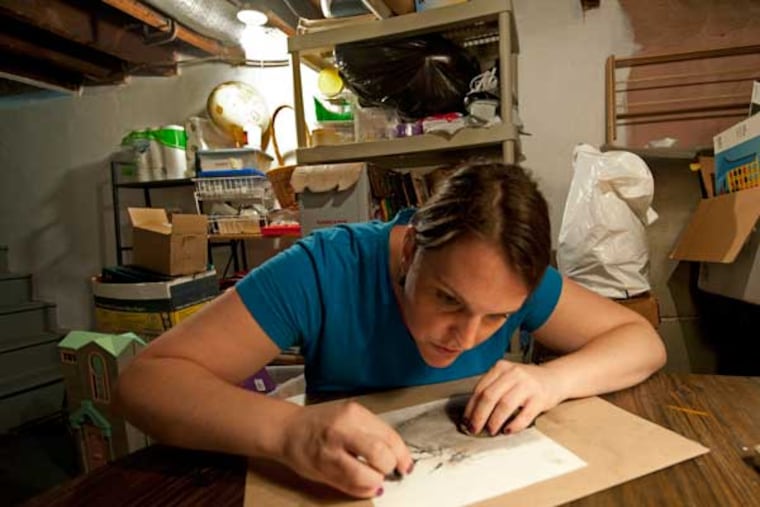For 25 years, bringing art to visually impaired
Decades ago, Alice Lea Tasman was walking by her boss' office at the Philadelphia Museum of Art when she saw a sculpture that caught her eye.

Decades ago, Alice Lea Tasman was walking by her boss' office at the Philadelphia Museum of Art when she saw a sculpture that caught her eye.
"I said, 'Bob, what's that out there?' He said it was by the visually impaired," she recalled.
The Art Museum, she discovered, ran a program called Form in Art, which gave art lessons to the visually impaired. Tasman, married to the man who was then the ophthalmologist-in-chief at Wills Eye Institute, had an idea.
Thus was born a partnership between the museum and the hospital that just celebrated its 25th anniversary.
At the annual celebration and art exhibit at Wills Eye last month, Tasman, 79, bought a wire sculpture of Pegasus by Michael Gieschen, who is legally blind. Gieschen, a former graphic artist, not only sold the sculpture to Tasman, but also was swarmed with five additional commissions.
Gieschen, 54, a Form in Art student for 15 years, is now working to fill those orders.
Every Friday for 26 weeks, a group of legally blind students walks the halls of the Art Museum and takes what they learn back to the studios.
"To even have access to the materials and the media and the studio space is such a privilege," said Jamie Wasson, 37, who has been in the program since she graduated from college. Wasson, who works with children and families as an art therapist, enjoys taking the time to express herself.
Once, she found herself working heavily with blues and blacks - the colors of a bruise - as she crafted a spectrum of color from dark to light. She started to think that maybe she was creating a metaphor of rising up.
"Then I thought, 'You know what, I'm going to go with it. I'm just going to let it be black and blue,' " she said.
Colors are not off-limits to the visually impaired. Teacher Eiko Fan has one student who has been with the program for about 25 years and has not been able to see since she was 8. She's now 92. The student, Romaine Samworth, loves to work with color.
"I do know color, and I know what I want to use," Samworth said. Although she can't paint detail, she likes to use colored paper.
Samworth has a scanner that detects the colors she's working with, Fan explained. It reads the colors to her in nuanced descriptions - "green-yellow," "red, dark-yellow" - and she stores her colored paper in Braille envelopes.
Visual impairment and art have a long history. Claude Monet had cataracts. The first time he painted a Japanese footbridge, the form was clear, and he used greens and blues. The second time he painted the same bridge, more than 20 years later, the bridge was blurry, brown and yellow.
Form in Art began as part of an initiative by the Art Museum to make itself more accessible to people with disabilities. The museum's Women's Committee has fully funded the program since its first class.
The display - and marketplace - at Wills Eye is another outlet for the students to be social with each other and their teachers outside of the classroom.
"One of the biggest problems of being blind is how you . . . tend to stay in your house," Gieschen said. "It's nice to get out and be social."
"People equate loss of vision with loss of life," said Julia Haller, Wills Eye's ophthalmologist-in-chief. The exhibit helps prove the opposite.
As Wills Eye outgrows its building on Eighth and Walnut Streets, Haller speculated about a permanent gallery in a potential new building, where the work could be displayed and sold year round. It could even have a rooftop garden with sculptures.
But for now, she said, the new building is still a "gleam in my eye."